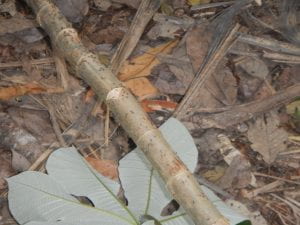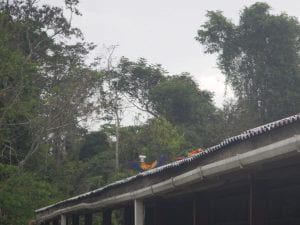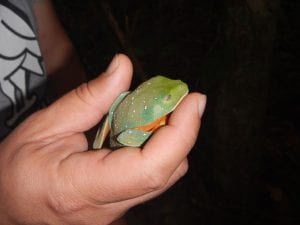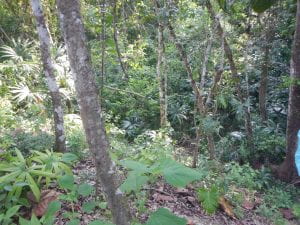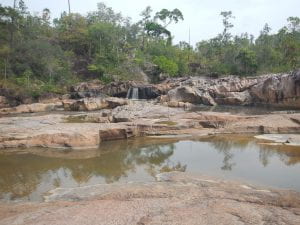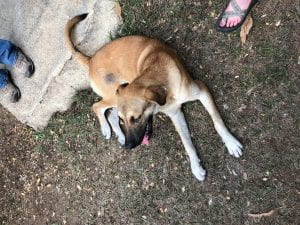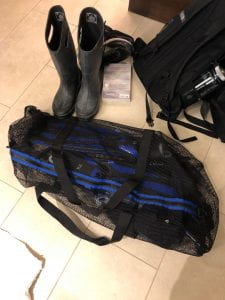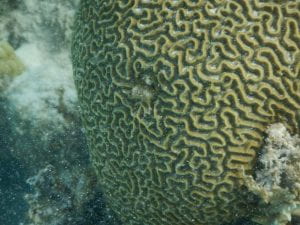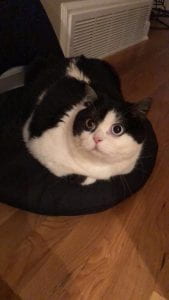May 20th, 2019
The morning was spent collecting camera traps that we set up day 2. While we were collecting our first traps on the 50 hectare plot trail, a troop of Central American Spider Monkeys were swinging in the trees and were at first trying to intimidate us by asking the trees near us. However, after a while, that initial intimidation turned into curiosity as the younger ones swung to trees right above us to get a closer look. The monkeys displayed great usage of the prehensile tails, with one of the littler ones at one point hanging completely upside down just by its tail. The monkeys also seemed to be communicating each other through quieter calls, and what seemed to be glances at each other.
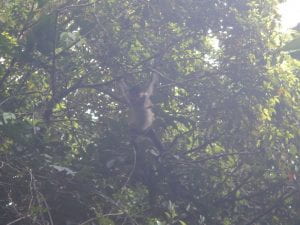
After that, we presented our data that we collected yesterday regarding the Sapodilla tree and leaf toughness. We found that the uncolonized trees’ leaves required more force to puncture but our standard deviation was so large that we couldn’t validate this result. We then went to excavate leaf cutter ants, whom cultivate fungus to eat and survive, and got to see the fungus first hand.
Lastly, I presented my presentation on rainforest mammals in which I talked about 5 species of mammals in the Chiquibul, there are a total of 97, and common characteristics that mammals have. These characteristics being mammary glands, hair, a hinged lower jaw, and three middle bones in the ear. We then looked through the camera trap pictures and we were surprised with a tapir(a mammal)! It was most likely a Baird’s Tapir with its short legs, and barrel shaped body. They are the largest herbivore in Central America and are actually endangered.
Tomorrow we head to ATM Cave and stay the night near the Belize Zoo at the Tropical Education Center.

